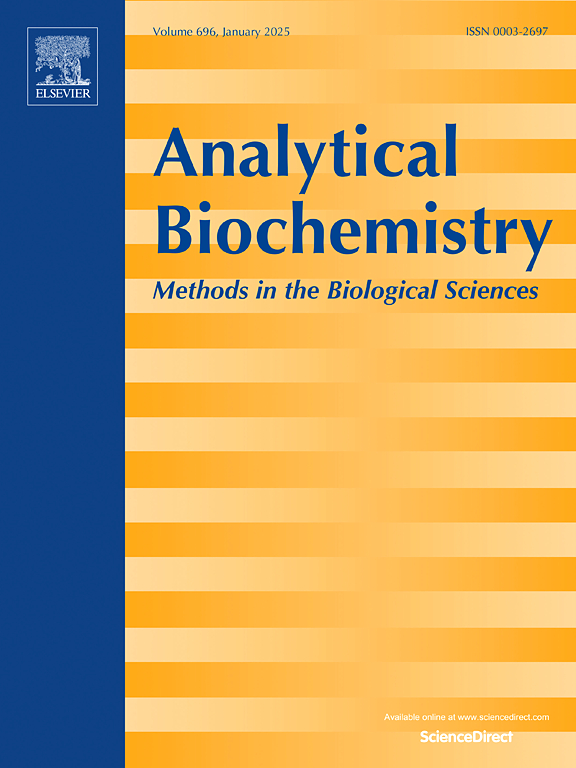食品安全石墨烯电化学生物传感器研究进展与挑战
IF 2.5
4区 生物学
Q2 BIOCHEMICAL RESEARCH METHODS
引用次数: 0
摘要
确保食品安全是全球关注的一个关键问题,特别是考虑到最近的大流行病以及农药、抗生素、毒素和过敏原造成的污染风险不断上升。这些污染物构成严重的健康危害,包括神经系统疾病、内分泌干扰、抗生素耐药性和致癌作用。粮食及农业组织(粮农组织)、世界卫生组织(世卫组织)和美国食品和药物管理局(FDA)等监管机构制定了严格的最大残留限量(MRLs),以减轻这些风险。然而,由于现有检测方法的局限性,执法仍然具有挑战性。全球人口的增长和有限的粮食资源加剧了粮食安全挑战,而污染物可以渗透到食品的各个阶段,包括生产、加工和包装。尽管消费者意识到了这一点,但由于质量问题,大量食品被丢弃。为了解决这些问题,研究人员正在积极开发低成本、可靠的实时食品质量评估和污染检测传感技术。其中,基于石墨烯的电化学生物传感器由于其高灵敏度、选择性和成本效益而成为一种有前途的解决方案。本文综述了基于石墨烯的电化学生物传感器的最新进展,重点介绍了它们在检测食源性危害和改善食品质量监测方面的作用。通过集成选择性层,这些传感器提高了检测效率,并为保障公众健康提供了创新的解决方案。这些发现强调了石墨烯衍生的生物传感器在食品安全诊断中的变革潜力,为更可靠和可持续的食品监测系统铺平了道路。本文章由计算机程序翻译,如有差异,请以英文原文为准。

Recent advances and challenges in graphene-based electrochemical biosensors for food safety
Ensuring food safety is a critical global concern, particularly in light of recent pandemics and rising contamination risks from pesticides, antibiotics, toxins, and allergens. These contaminants pose significant health hazards, including neurological disorders, endocrine disruption, antibiotic resistance, and carcinogenic effects. Regulatory agencies such as the Food and Agriculture Organization (FAO), the World Health Organization (WHO), and the United States Food and Drug Administration (FDA) have established strict maximum residue limits (MRLs) to mitigate these risks. However, enforcement remains challenging due to limitations in current detection methods. The increasing global population and limited food resources have exacerbated food security challenges, while contaminants can infiltrate food at various stages, including production, processing, and packaging. Despite consumer awareness, significant amounts of food are discarded due to quality concerns. To address these issues, researchers are actively developing low-cost, reliable sensing technologies for real-time food quality assessment and contamination detection. Among these, graphene-based electrochemical biosensors have emerged as a promising solution due to their high sensitivity, selectivity, and cost-effectiveness. This review provides an in-depth analysis of recent advancements in graphene-based electrochemical biosensors, focusing on their role in detecting foodborne hazards and improving food quality monitoring. By integrating selective layers, these sensors enhance detection efficiency and provide an innovative solution for safeguarding public health. The findings underscore the transformative potential of graphene-derived biosensors in food safety diagnostics, paving the way for more reliable and sustainable food monitoring systems.
求助全文
通过发布文献求助,成功后即可免费获取论文全文。
去求助
来源期刊

Analytical biochemistry
生物-分析化学
CiteScore
5.70
自引率
0.00%
发文量
283
审稿时长
44 days
期刊介绍:
The journal''s title Analytical Biochemistry: Methods in the Biological Sciences declares its broad scope: methods for the basic biological sciences that include biochemistry, molecular genetics, cell biology, proteomics, immunology, bioinformatics and wherever the frontiers of research take the field.
The emphasis is on methods from the strictly analytical to the more preparative that would include novel approaches to protein purification as well as improvements in cell and organ culture. The actual techniques are equally inclusive ranging from aptamers to zymology.
The journal has been particularly active in:
-Analytical techniques for biological molecules-
Aptamer selection and utilization-
Biosensors-
Chromatography-
Cloning, sequencing and mutagenesis-
Electrochemical methods-
Electrophoresis-
Enzyme characterization methods-
Immunological approaches-
Mass spectrometry of proteins and nucleic acids-
Metabolomics-
Nano level techniques-
Optical spectroscopy in all its forms.
The journal is reluctant to include most drug and strictly clinical studies as there are more suitable publication platforms for these types of papers.
 求助内容:
求助内容: 应助结果提醒方式:
应助结果提醒方式:


